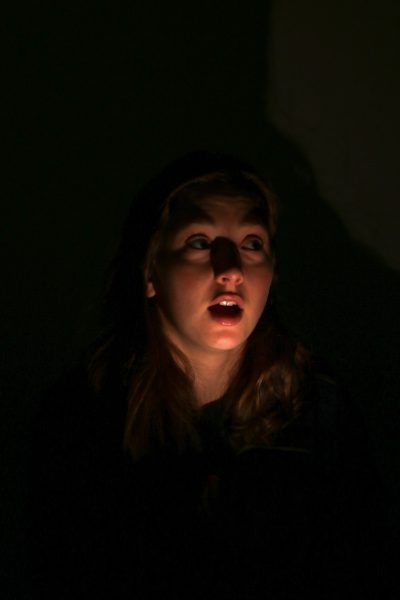
For generations, ghost stories have circulated through Milledgeville’s streets and across Georgia College’s campus, blending local history with folklore. While some residents view them as harmless tales, others say the stories reflect deeper parts of the town’s past.
One of the most enduring legends is that of Betty Jean “Cookie” Cook, a senior who died in Sanford Hall in 1952.
Records at the time described her death as a suicide, but inconsistencies in the report led to long-standing doubts. Historians note that students in the decades that followed reported unexplained noises, flickering lights and cold spots on the third floor of Sanford Hall, which has since been closed to the public. The story resurfaced in the 1970s when the building briefly served as a men’s dorm, and students began holding Halloween parties on the floor associated with Cookie’s death.
Dr. Bob Wilson, a retired Georgia College history professor, has studied the origins of many of these stories. He explained that Cookie’s case, along with others like it, reveals how personal tragedy can evolve into campus folklore. The legend took an unexpected turn when Wilson interviewed a student who claimed to have seen a young woman’s ghost floating outside a Sanford window.
“I showed her a yearbook photo of all the senior girls from 1952,” Wilson said. “She immediately pointed to Cookie. I’m not a paranormal person, but that one mystified me.”
Another prominent story involves Mary Virginia Harrison, a Milledgeville native and city planner who died in 1979 at what is now known as the Harrison House. Her death was also ruled a suicide, though her life and work left a lasting mark on the community. Both women were known for their independence and ambition, and their stories continue to surface in local accounts of hauntings.
Local historian and tour guide, Jackie Turner includes both Sanford Hall and the Harrison House on her Ghosts of Milledgeville walking tour. Turner’s tours connect these well-known tales with the broader social and political history of the town, once Georgia’s capital and later home to Central State Hospital.
“Thumps and thuds, noises, there is always strange stuff happening on Sanford Hall’s third floor,” Turner said.
She describes Milledgeville as a place where the past lingers, not just through architecture, but through the stories residents continue to tell.
Students on campus often share their own experiences, ranging from faint tapping noises to unexplained chills in older dorms.
Junior Riley Kate Miller said she believes “Sanford Hall has an unsettling atmosphere,” a feeling echoed by other students familiar with its history.
“I do believe in ghosts,” Miller said. “But that actually makes me more critical of the stories; I’m always wondering if it’s something real or just people wanting attention.”
While few residents claim to have seen ghosts themselves, many agree that the stories serve an important purpose. They preserve local memory, spark historical interest and remind the community of the people who once shaped it.
Whether fact or folklore, Milledgeville’s ghost stories continue to link the living to the city’s layered and sometimes haunting past. And as long as the lights flicker in Sanford Hall, the stories are sure to live on.

